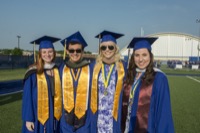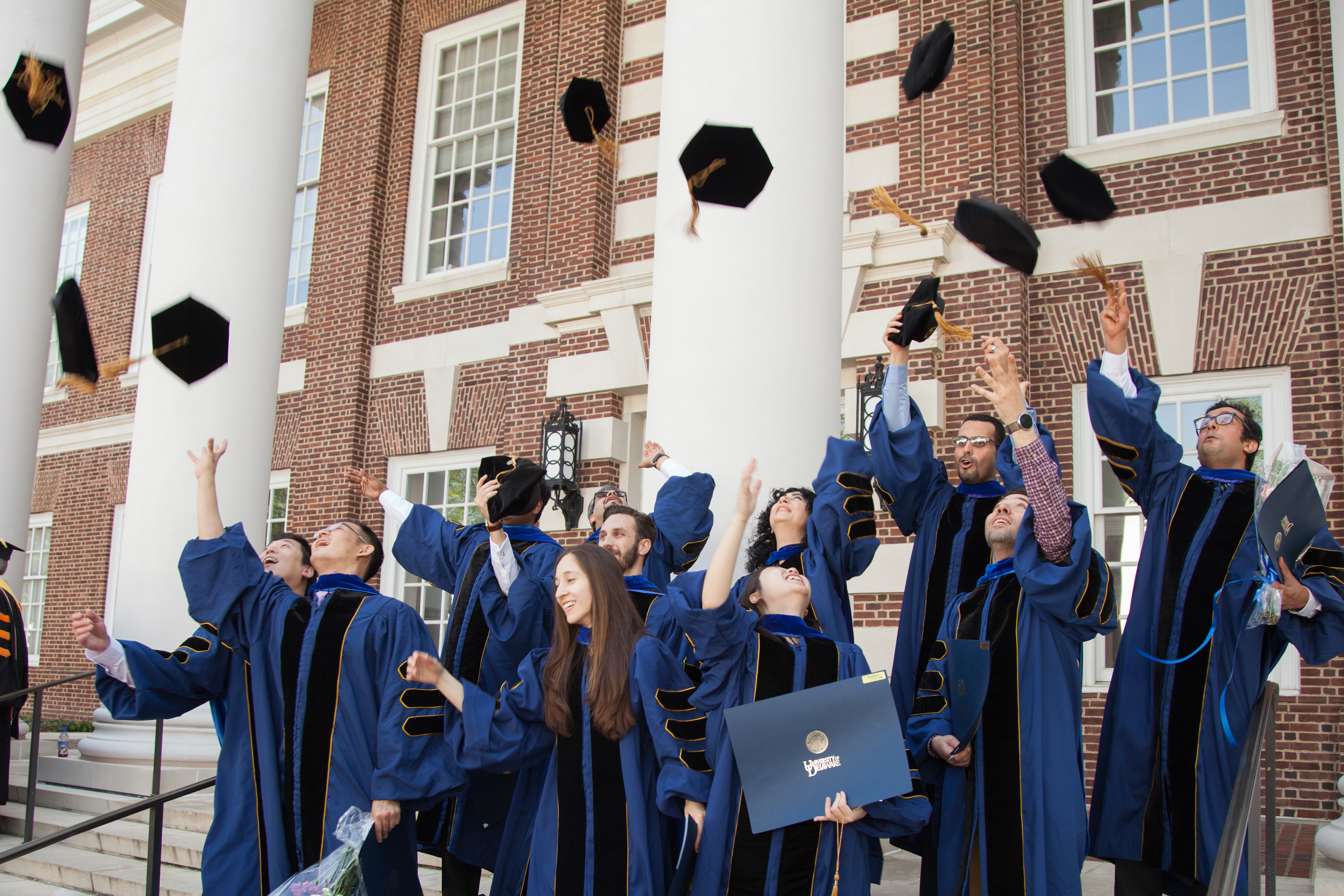Rephotography project
UD rephotography project offers insights to campus history
4 p.m., June 7, 2013--It was nearly a century ago that the University of Delaware first found itself in a rapid, dizzying period of expansion, where growth could be measured in gifts, in land, in architectural blueprints that would soon give way to bricks and mortar structures along The Green.
Iconic structures. Buildings constructed at a time when men and women studied in separate colleges on opposite ends of campus and mingled in Memorial Hall. Then known as Memorial Library, its identical entrances were built to provide both sexes equal access to the center (and intellectual heart) of campus.
Campus Stories
From graduates, faculty
Doctoral hooding
Completed in December 1924, Memorial was perhaps the Interdisciplinary Science and Engineering Laboratory (ISE Lab) of its day — a significant capital project that was fundamental to the primary scholarship of the University.
That might be why the late Delaware photographer Roydon Hammond took still shots of the building soon after its completion.
Noted mostly for his images of Delaware plants, agriculture and farm life, Hammond is widely regarded as the state’s foremost documentary photographer. Of his collection of 2,000-plus glass plate negatives, now housed in the Delaware Public Archives, about two dozen are of various University buildings from the 1920s and ’30s.
But why he took them and what purpose they served we may never fully know.
David Ames, professor of urban affairs and public policy and geography and director of the Center for Historic and Architecture and Design, speculates that some images, like the Memorial Hall photograph, might be construction shots. Others, like photos of Old College and wide shots of The Green, may have been used for state tourism efforts.
“The pictures give us knowledge that we didn’t have before; they bring new information to interpret,” says Ames, who has been working on a larger three-year project to “rephotograph” hundreds of the images from Hammond’s 2,000-plus collection.
In the interest of authenticity and precision, photographer and historic preservation graduate student Candice Myruski has been shooting the UD rephotographs with a large-format camera, similar to the one used by Hammond.
She spent time last spring rephotographing nearly half of the 32 campus pictures Hammond took between 1925 and 1936 (of the 32 images, only 15 were distinct pictures, as each photo was shot multiple times).
And just as Hammond took duplicate images of the same building, Myruski often found herself standing where he stood nearly a century before, taking an extra photo with the precision of her predecessor.
She recreated his process down to vantage point lens coverage, lighting and weather conditions under which the original glass plates were taken. But to process the rephotographs, she and Ames developed what they call a “figital” technique — film plus digital—in which they scan the large format film negatives and work with digital negatives.
“It’s interesting to recreate these pictures,” Myruski says. “They serve as historical documents for how campus has changed over the years. Or hasn’t.”
In fact, in a project that aims to document a nearly 100-year history, perhaps most interesting is how most of these structures have remained virtually unchanged as the world around them has aged.
“A University is about study and meditation,” Ames explains. “Continuity is important, and stability,” he adds, “is often a testament of strength.”
Article by Artika Casini
Photos by Roydon Hammond and Candice Myruski


















